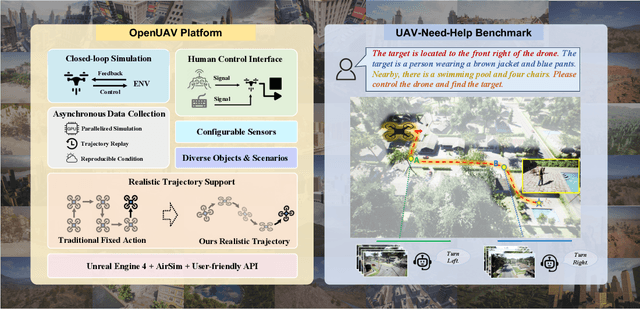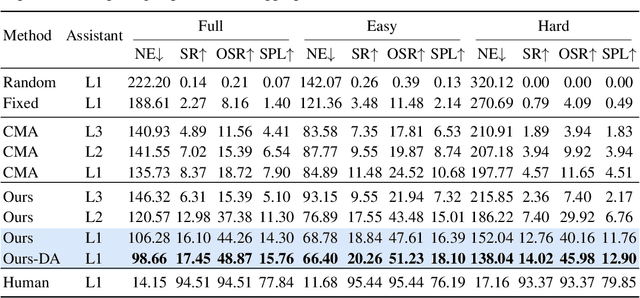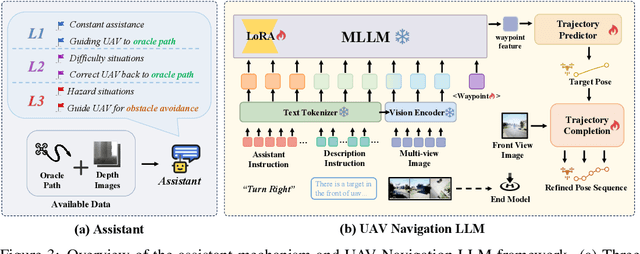Yue Liao
Vision-to-Music Generation: A Survey
Mar 27, 2025Abstract:Vision-to-music Generation, including video-to-music and image-to-music tasks, is a significant branch of multimodal artificial intelligence demonstrating vast application prospects in fields such as film scoring, short video creation, and dance music synthesis. However, compared to the rapid development of modalities like text and images, research in vision-to-music is still in its preliminary stage due to its complex internal structure and the difficulty of modeling dynamic relationships with video. Existing surveys focus on general music generation without comprehensive discussion on vision-to-music. In this paper, we systematically review the research progress in the field of vision-to-music generation. We first analyze the technical characteristics and core challenges for three input types: general videos, human movement videos, and images, as well as two output types of symbolic music and audio music. We then summarize the existing methodologies on vision-to-music generation from the architecture perspective. A detailed review of common datasets and evaluation metrics is provided. Finally, we discuss current challenges and promising directions for future research. We hope our survey can inspire further innovation in vision-to-music generation and the broader field of multimodal generation in academic research and industrial applications. To follow latest works and foster further innovation in this field, we are continuously maintaining a GitHub repository at https://github.com/wzk1015/Awesome-Vision-to-Music-Generation.
Instruction-Oriented Preference Alignment for Enhancing Multi-Modal Comprehension Capability of MLLMs
Mar 26, 2025Abstract:Preference alignment has emerged as an effective strategy to enhance the performance of Multimodal Large Language Models (MLLMs) following supervised fine-tuning. While existing preference alignment methods predominantly target hallucination factors, they overlook the factors essential for multi-modal comprehension capabilities, often narrowing their improvements on hallucination mitigation. To bridge this gap, we propose Instruction-oriented Preference Alignment (IPA), a scalable framework designed to automatically construct alignment preferences grounded in instruction fulfillment efficacy. Our method involves an automated preference construction coupled with a dedicated verification process that identifies instruction-oriented factors, avoiding significant variability in response representations. Additionally, IPA incorporates a progressive preference collection pipeline, further recalling challenging samples through model self-evolution and reference-guided refinement. Experiments conducted on Qwen2VL-7B demonstrate IPA's effectiveness across multiple benchmarks, including hallucination evaluation, visual question answering, and text understanding tasks, highlighting its capability to enhance general comprehension.
Adversarial Data Collection: Human-Collaborative Perturbations for Efficient and Robust Robotic Imitation Learning
Mar 14, 2025Abstract:The pursuit of data efficiency, where quality outweighs quantity, has emerged as a cornerstone in robotic manipulation, especially given the high costs associated with real-world data collection. We propose that maximizing the informational density of individual demonstrations can dramatically reduce reliance on large-scale datasets while improving task performance. To this end, we introduce Adversarial Data Collection, a Human-in-the-Loop (HiL) framework that redefines robotic data acquisition through real-time, bidirectional human-environment interactions. Unlike conventional pipelines that passively record static demonstrations, ADC adopts a collaborative perturbation paradigm: during a single episode, an adversarial operator dynamically alters object states, environmental conditions, and linguistic commands, while the tele-operator adaptively adjusts actions to overcome these evolving challenges. This process compresses diverse failure-recovery behaviors, compositional task variations, and environmental perturbations into minimal demonstrations. Our experiments demonstrate that ADC-trained models achieve superior compositional generalization to unseen task instructions, enhanced robustness to perceptual perturbations, and emergent error recovery capabilities. Strikingly, models trained with merely 20% of the demonstration volume collected through ADC significantly outperform traditional approaches using full datasets. These advances bridge the gap between data-centric learning paradigms and practical robotic deployment, demonstrating that strategic data acquisition, not merely post-hoc processing, is critical for scalable, real-world robot learning. Additionally, we are curating a large-scale ADC-Robotics dataset comprising real-world manipulation tasks with adversarial perturbations. This benchmark will be open-sourced to facilitate advancements in robotic imitation learning.
Anchor3DLane++: 3D Lane Detection via Sample-Adaptive Sparse 3D Anchor Regression
Dec 22, 2024Abstract:In this paper, we focus on the challenging task of monocular 3D lane detection. Previous methods typically adopt inverse perspective mapping (IPM) to transform the Front-Viewed (FV) images or features into the Bird-Eye-Viewed (BEV) space for lane detection. However, IPM's dependence on flat ground assumption and context information loss in BEV representations lead to inaccurate 3D information estimation. Though efforts have been made to bypass BEV and directly predict 3D lanes from FV representations, their performances still fall behind BEV-based methods due to a lack of structured modeling of 3D lanes. In this paper, we propose a novel BEV-free method named Anchor3DLane++ which defines 3D lane anchors as structural representations and makes predictions directly from FV features. We also design a Prototype-based Adaptive Anchor Generation (PAAG) module to generate sample-adaptive sparse 3D anchors dynamically. In addition, an Equal-Width (EW) loss is developed to leverage the parallel property of lanes for regularization. Furthermore, camera-LiDAR fusion is also explored based on Anchor3DLane++ to leverage complementary information. Extensive experiments on three popular 3D lane detection benchmarks show that our Anchor3DLane++ outperforms previous state-of-the-art methods. Code is available at: https://github.com/tusen-ai/Anchor3DLane.
Multimodal Music Generation with Explicit Bridges and Retrieval Augmentation
Dec 12, 2024Abstract:Multimodal music generation aims to produce music from diverse input modalities, including text, videos, and images. Existing methods use a common embedding space for multimodal fusion. Despite their effectiveness in other modalities, their application in multimodal music generation faces challenges of data scarcity, weak cross-modal alignment, and limited controllability. This paper addresses these issues by using explicit bridges of text and music for multimodal alignment. We introduce a novel method named Visuals Music Bridge (VMB). Specifically, a Multimodal Music Description Model converts visual inputs into detailed textual descriptions to provide the text bridge; a Dual-track Music Retrieval module that combines broad and targeted retrieval strategies to provide the music bridge and enable user control. Finally, we design an Explicitly Conditioned Music Generation framework to generate music based on the two bridges. We conduct experiments on video-to-music, image-to-music, text-to-music, and controllable music generation tasks, along with experiments on controllability. The results demonstrate that VMB significantly enhances music quality, modality, and customization alignment compared to previous methods. VMB sets a new standard for interpretable and expressive multimodal music generation with applications in various multimedia fields. Demos and code are available at https://github.com/wbs2788/VMB.
TopV-Nav: Unlocking the Top-View Spatial Reasoning Potential of MLLM for Zero-shot Object Navigation
Nov 25, 2024



Abstract:The Zero-Shot Object Navigation (ZSON) task requires embodied agents to find a previously unseen object by navigating in unfamiliar environments. Such a goal-oriented exploration heavily relies on the ability to perceive, understand, and reason based on the spatial information of the environment. However, current LLM-based approaches convert visual observations to language descriptions and reason in the linguistic space, leading to the loss of spatial information. In this paper, we introduce TopV-Nav, a MLLM-based method that directly reasons on the top-view map with complete spatial information. To fully unlock the MLLM's spatial reasoning potential in top-view perspective, we propose the Adaptive Visual Prompt Generation (AVPG) method to adaptively construct semantically-rich top-view map. It enables the agent to directly utilize spatial information contained in the top-view map to conduct thorough reasoning. Besides, we design a Dynamic Map Scaling (DMS) mechanism to dynamically zoom top-view map at preferred scales, enhancing local fine-grained reasoning. Additionally, we devise a Target-Guided Navigation (TGN) mechanism to predict and to utilize target locations, facilitating global and human-like exploration. Experiments on MP3D and HM3D benchmarks demonstrate the superiority of our TopV-Nav, e.g., $+3.9\%$ SR and $+2.0\%$ SPL absolute improvements on HM3D.
VideoEspresso: A Large-Scale Chain-of-Thought Dataset for Fine-Grained Video Reasoning via Core Frame Selection
Nov 22, 2024Abstract:The advancement of Large Vision Language Models (LVLMs) has significantly improved multimodal understanding, yet challenges remain in video reasoning tasks due to the scarcity of high-quality, large-scale datasets. Existing video question-answering (VideoQA) datasets often rely on costly manual annotations with insufficient granularity or automatic construction methods with redundant frame-by-frame analysis, limiting their scalability and effectiveness for complex reasoning. To address these challenges, we introduce VideoEspresso, a novel dataset that features VideoQA pairs preserving essential spatial details and temporal coherence, along with multimodal annotations of intermediate reasoning steps. Our construction pipeline employs a semantic-aware method to reduce redundancy, followed by generating QA pairs using GPT-4o. We further develop video Chain-of-Thought (CoT) annotations to enrich reasoning processes, guiding GPT-4o in extracting logical relationships from QA pairs and video content. To exploit the potential of high-quality VideoQA pairs, we propose a Hybrid LVLMs Collaboration framework, featuring a Frame Selector and a two-stage instruction fine-tuned reasoning LVLM. This framework adaptively selects core frames and performs CoT reasoning using multimodal evidence. Evaluated on our proposed benchmark with 14 tasks against 9 popular LVLMs, our method outperforms existing baselines on most tasks, demonstrating superior video reasoning capabilities. Our code and dataset will be released at: https://github.com/hshjerry/VideoEspresso
Towards Realistic UAV Vision-Language Navigation: Platform, Benchmark, and Methodology
Oct 10, 2024



Abstract:Developing agents capable of navigating to a target location based on language instructions and visual information, known as vision-language navigation (VLN), has attracted widespread interest. Most research has focused on ground-based agents, while UAV-based VLN remains relatively underexplored. Recent efforts in UAV vision-language navigation predominantly adopt ground-based VLN settings, relying on predefined discrete action spaces and neglecting the inherent disparities in agent movement dynamics and the complexity of navigation tasks between ground and aerial environments. To address these disparities and challenges, we propose solutions from three perspectives: platform, benchmark, and methodology. To enable realistic UAV trajectory simulation in VLN tasks, we propose the OpenUAV platform, which features diverse environments, realistic flight control, and extensive algorithmic support. We further construct a target-oriented VLN dataset consisting of approximately 12k trajectories on this platform, serving as the first dataset specifically designed for realistic UAV VLN tasks. To tackle the challenges posed by complex aerial environments, we propose an assistant-guided UAV object search benchmark called UAV-Need-Help, which provides varying levels of guidance information to help UAVs better accomplish realistic VLN tasks. We also propose a UAV navigation LLM that, given multi-view images, task descriptions, and assistant instructions, leverages the multimodal understanding capabilities of the MLLM to jointly process visual and textual information, and performs hierarchical trajectory generation. The evaluation results of our method significantly outperform the baseline models, while there remains a considerable gap between our results and those achieved by human operators, underscoring the challenge presented by the UAV-Need-Help task.
MC-MoE: Mixture Compressor for Mixture-of-Experts LLMs Gains More
Oct 08, 2024



Abstract:Mixture-of-Experts large language models (MoE-LLMs) marks a significant step forward of language models, however, they encounter two critical challenges in practice: 1) expert parameters lead to considerable memory consumption and loading latency; and 2) the current activated experts are redundant, as many tokens may only require a single expert. Motivated by these issues, we investigate the MoE-LLMs and make two key observations: a) different experts exhibit varying behaviors on activation reconstruction error, routing scores, and activated frequencies, highlighting their differing importance, and b) not all tokens are equally important -- only a small subset is critical. Building on these insights, we propose MC-MoE, a training-free Mixture-Compressor for MoE-LLMs, which leverages the significance of both experts and tokens to achieve an extreme compression. First, to mitigate storage and loading overheads, we introduce Pre-Loading Mixed-Precision Quantization, which formulates the adaptive bit-width allocation as a Linear Programming problem, where the objective function balances multi-factors reflecting the importance of each expert. Additionally, we develop Online Dynamic Pruning, which identifies important tokens to retain and dynamically select activated experts for other tokens during inference to optimize efficiency while maintaining performance. Our MC-MoE integrates static quantization and dynamic pruning to collaboratively achieve extreme compression for MoE-LLMs with less accuracy loss, ensuring an optimal trade-off between performance and efficiency. Extensive experiments confirm the effectiveness of our approach. For instance, at 2.54 bits, MC-MoE compresses 76.6% of the model, with only a 3.8% average accuracy loss. During dynamic inference, we further reduce activated parameters by 15%, with a performance drop of less than 0.6%.
Knowledge Distillation via Query Selection for Detection Transformer
Sep 10, 2024



Abstract:Transformers have revolutionized the object detection landscape by introducing DETRs, acclaimed for their simplicity and efficacy. Despite their advantages, the substantial size of these models poses significant challenges for practical deployment, particularly in resource-constrained environments. This paper addresses the challenge of compressing DETR by leveraging knowledge distillation, a technique that holds promise for maintaining model performance while reducing size. A critical aspect of DETRs' performance is their reliance on queries to interpret object representations accurately. Traditional distillation methods often focus exclusively on positive queries, identified through bipartite matching, neglecting the rich information present in hard-negative queries. Our visual analysis indicates that hard-negative queries, focusing on foreground elements, are crucial for enhancing distillation outcomes. To this end, we introduce a novel Group Query Selection strategy, which diverges from traditional query selection in DETR distillation by segmenting queries based on their Generalized Intersection over Union (GIoU) with ground truth objects, thereby uncovering valuable hard-negative queries for distillation. Furthermore, we present the Knowledge Distillation via Query Selection for DETR (QSKD) framework, which incorporates Attention-Guided Feature Distillation (AGFD) and Local Alignment Prediction Distillation (LAPD). These components optimize the distillation process by focusing on the most informative aspects of the teacher model's intermediate features and output. Our comprehensive experimental evaluation of the MS-COCO dataset demonstrates the effectiveness of our approach, significantly improving average precision (AP) across various DETR architectures without incurring substantial computational costs. Specifically, the AP of Conditional DETR ResNet-18 increased from 35.8 to 39.9.
 Add to Chrome
Add to Chrome Add to Firefox
Add to Firefox Add to Edge
Add to Edge